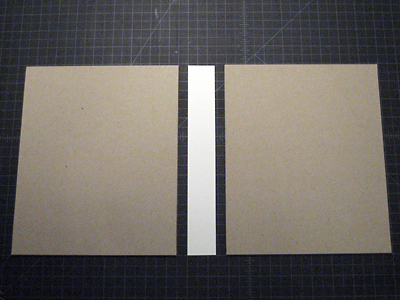Basic Black (or, Why I Want to Learn to Sew Better)
September 30th, 2007 | Link
CPUs. Cayce Pollard Units. That’s what Damien calls the clothing she wears. CPUs are either black, white or gray, and ideally seem to have come into this world without human intervention.
William Gibson
Pattern Recognition
I wasn’t a big fan of William Gibson until I read Pattern Recognition, when Jane told me that the protagonist reminded her of me. And it’s true, the line above sounds a lot like my wardrobe: black, white or gray (plus a few shades of blue jeans) with as few logos, brands or embellishments as possible. Clothing that, as Gibson writes later, “could have been worn, to a general lack of comment, during any year between 1945 and 2000.”
I work in software, where the standard office uniform is a t-shirt and jeans, so I can get by with a rotating assortment of Gap classic t-shirts in long or short sleeves, in black or gray. When one wears out I replace it with the same piece. In the summer I wear tank tops, in black or white. I avoid shopping for jeans until the ones I’ve got are worn out and I’m forced to go try on a zillion pairs to find something that fits well and doesn’t make me look like I’m trying to pretend I’m still 16. For dressing up, I have a couple of black skirts (one wool in an a-line, one linen with a box-pleat), which I usually wear with black tights, and some ribbed silk sleeveless turtlenecks. Although I keep buying cute shoes at Designer Shoe Warehouse, the only ones I ever wear are a pair of chunky black Italian pumps or knee-high boots, plus sneakers for every day (which is a relatively new development – for years I wore Doc Marten’s with almost everything).
I do buy new clothes. A few times a year I get the urge to go shopping, and I buy things that fall outside the range above and are rarely worn, or I buy things that mostly fit my style but don’t quite fit my body. Either way, most of these items end up being given away. I wear the pieces that do fit until they fall apart – which often doesn’t take very long.
All this lengthy introduction boils down to why I’ve decided to try to learn to sew better, to alter patterns so they fit me better, and maybe even to modify patterns to suit my own style. I’ve done a bit of sewing over the years, but mostly piecing quilt blocks (always with straight lines). The few items of clothing I’ve made have either been from really, really simple patterns, or ended up at my mother’s to be finished (often both). I’d like to make a few well-fitted shirts and tops, some comfortable, casual pants, and perhaps a couple of dresses. I don’t need a lot of clothes, but a few options would be nice.








